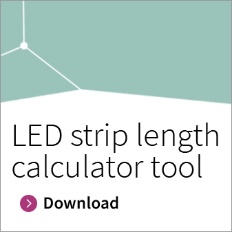Linear LED Driver IC
Go for quality with Infineon’s cost-efficient linear LED driver ICs
LED lights have become part of our daily lives. Typical lighting applications for linear driver LEDs are found in commercial LED lighting such as signage, channel letters, LED strips and modules, and even automotive interior lights, emergency lights, and multi-channel/color applications for architectural lighting. Further applications are lighting for shops and retail equipment like fridges, freezers, and vending machines. Common to all these use cases is very limited board space availability. Linear constant current LED drivers meet this requirement, as only few very small components are necessary.
Infineon’s BCR linear LED driver ICs are the best choice for driving LED strings supplied by a DC voltage source. The BCR regulators are suitable for driving currents from 10mA to 250mA. That is why they are the best solution for low- and mid-power LEDs. For high-power LEDs, the linear constant current LED controller ICs in combination with an external power stage allow for the greatest design flexibility.
BCR linear LED driver ICs are suitable for PWM dimming at high dimming frequencies, allowing flicker-free light to create the right atmosphere. PWM dimming is supported either by a microcontroller interface or by means of an external digital transistor.
Another important topic to be considered is the superior homogenous light output with linear constant current LED driver IC control, which allows despite voltage drop at the LEDs and ICs for unified brightness at the beginning as well as the end of the LED strip. Devices that use LED driver chips, such as the BCR431U, feature an extra-low voltage drop which is ideal in cases where supply voltage and forward voltage are very close together and voltage headroom is required. Using linear constant current LED driver ICs enables more design flexibility such as applications with more LEDs on one strip and longer LED strips overall. Additionally, longer LED strips require fewer feeding points and thus leads to savings in the overall system.
There are many general lighting applications that can benefit from linear LED strips and string designs since linear LED driver ICs are suitable for a wide variety of power ranges and applications. Along with reducing output current at higher temperatures for a longer device lifetime, Infineon’s linear LED drivers also provide homogeneous light output and greater design flexibility.
In contrast to limiting the LED driving current with a simple resistor, Infineon’s BCR regulators have the advantage that the driving current is always under control, no matter at which temperature. Thanks to its negative thermal coefficient, the LED load will be protected from overheating which contributes to longevity and reliability of the system and allows for the usage in outdoor as well as automotive applications.







